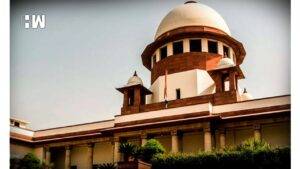2016 Demonetisation: Centre tells Supreme Court that Parliament took notification into account

New Delhi: The Centre on Wednesday justified its 2016 demonetisation policy and argued that after the notification was issued on November 8, 2016, parliament took it into account and there was a debate on it. Appearing for the Centre, Attorney General R Venkataramani, in his rejoinder submission, defended the Central…
The post appeared first on .


New Delhi: The Centre on Wednesday justified its 2016 demonetisation policy and argued that after the notification was issued on November 8, 2016, parliament took it into account and there was a debate on it.
Appearing for the Centre, Attorney General R Venkataramani, in his rejoinder submission, defended the Central Government’s decision to demonetise the old notes of Rs.500 and Rs.1000 and apprised the constitution bench of the Supreme Court that there were debates in the parliament after the notification was issued. He also told the court that parliament took the notification into account.
“First time I have seen a notification referred to by the Parliament,” AG said, who chose not to say anything on validating legislation, but clarified that the notification dated Nov 8 2016 was not arbitrary.
He made his submission before a five-judge bench of Justices Abdul Nazeer, BR Gavai, AS Bopanna, V Ramasubramanian and BV Nagarathna, which reserved the order today after the parties concerned concluded their arguments.
The court was dealing with a notification dated Nov 8 2016 demonetising old currency notes of Rs 500 and 1000.
Appearing for the petitioner, Senior Advocate Chidambaram yesterday raised the point that the government would have raised the demonetisation before the parliament before taking the decision as he argued that parliamentarians would have stopped the policy but they did not follow the legislative route.
AG Venkatramani today again countered the arguments based on the interpretation of 26(2) of the Reserve Bank of India Act 1934. He also submitted that the dignity aspect should be preserved for more precious cases but no question of dignity for the NRI, who went abroad for financial benefit.
Senior Advocate Shyam Divan, appearing for one of the petitioners who want to deposit Rs. 1,62,000 of Specified Bank Notes with the RBI, and obtain equivalent value plus interest in his bank account, also made his rejoinder submission and opposed the Central Government decision.
Senior Advocate Shyam Divan, in his rejoinder submissions, said that Section 26(2) of the RBI Act is an administrative power in the exercise of executive functions. He said that In 26(1) of the RBI Act has two distinct concepts, one says ‘shall be legal tender and the other one shall be guaranteed by the Central Government.
Divan said that the Recommendation of the Central Board (of RBI) is a necessary requirement to exercise 26(2), which is a precondition.
The petitioner has sought to set-aside Specified Bank Notes (Cessation of Liabilities) Act 2017 (the SBN Act) as unconstitutional and sought to lay down guidelines for the future on the exercise of power under Section 26(2) of the RBI Act to demonetise currency notes of specified denominations.
The court while reserving the order has asked Centre and RBI to place before its relevant records pertaining to the decision.
The court was dealing with various petitions challenging 2016’s decision of the Central Government to demonetise the old notes of Rs.500 and Rs.1000.
The court today also asked the parties concerned to file their written submission by Saturday.
Earlier, Centre, in its affidavit filed in the Supreme Court, defended its decision to demonetise Rs 500 and 1,000 currency notes in 2016 as it said that it was a major step to fight the menace of fake currency notes, terror financing, black money and tax evasion.
Centre, in its affidavit filed in the Supreme Court, said that it was a part of a larger strategy for combating the menace of fake money, terror financing, black money and tax evasion, but not confined to them alone.
“It was an economic policy decision exercised in accordance with powers conferred by an Act of the Parliament (RBI Act, 1934), in conformity with the provisions of the said Act and was subsequently affirmatively taken note of by the Parliament in the Specified Bank Notes (Cessation of Liabilities) Act, 2017,” the affidavit said.
The affidavit was filed to counter the various pleas challenging the Centre’s November 8, 2016 decision. The matter is being heard by the Constitution Bench of the Supreme Court.
Also Read:
The notification issued on Nov 8, 2016, was a major step to fight the menace of fake currency notes, storage of unaccounted wealth and financing of subversive activities, the government said.
Justifying its decision, the government also said, “The expansion of the formal sector and the shrinking of the informal sector were undertaken through a series of policy measures. The policy push included digitalising transactions, technology connectivity and implementation to enable last-mile reach, increasing the tax base, enhancing tax compliance, lowering the cost of doing business, eliminating policy distortions, facilitating financial inclusion at the formal sector level and labour and agrarian reforms.”
(Except for the headline, this story has not been edited by HW News staff and is published from a syndicated feed.)
The post 2016 Demonetisation: Centre tells Supreme Court that Parliament took notification into account appeared first on HW News English.


